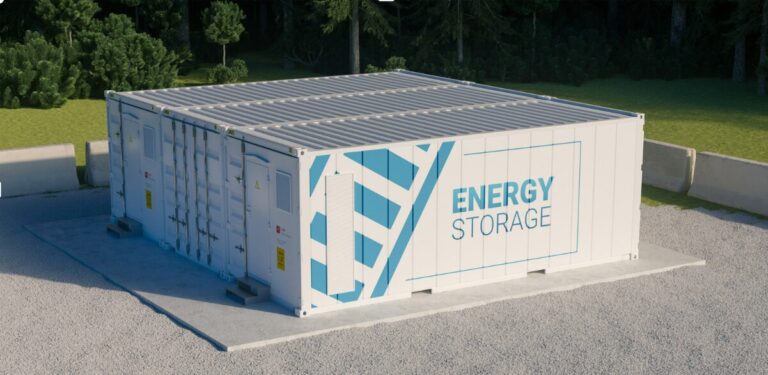
Passed on 26 June, the 2024 Energy Storage Systems Act (SB 2499 and HB 7811) represents a significant step toward achieving Rhode Island’s goal of 100% clean energy by 2030. This legislation emphasizes the importance of energy storage in enhancing the reliability and resilience of the state's energy grid, especially as it increasingly relies on renewable sources like solar and wind power.
The legislation was developed with input from various STEM experts, including those from environmental organizations, technical specialists in energy systems, and academic researchers focused on clean energy. This collaborative approach was key in grounding the drafting of the legislation in sound technical understanding and practical feasibility.
The involvement of these experts helped shape the bill's provisions, such as setting cumulative energy storage targets and developing infrastructure programs through the Rhode Island Infrastructure Bank. This helps to ensure that the legislation will effectively address technical challenges and promote innovation in energy storage technologies.
· Infrastructure Boost: The Act empowers the Rhode Island Infrastructure Bank to provide grants and loans for developing energy storage infrastructure. This support will help accelerate the adoption of energy storage technologies, making them more accessible to local communities and businesses.
· Ambitious Storage Goals: The Act has set cumulative energy storage capacity targets of 90 megawatts (MW) by 2026, 195 MW by 2028, and 600 MW by 2033. These targets are necessary so that the state can store excess energy generated during peak production times and use it when demand is high or when renewable sources are not producing energy.
· Role of the Public Utilities Commission (PUC): The PUC is tasked with implementing the Act, which includes creating regulations for storage and interconnection tariffs, evaluating storage technologies, and overseeing procurements from utilities.
To understand the specifics of this Act, it’s helpful to know some basics about battery and energy storage practices.
Battery storage systems operate by storing electrical energy in its chemical form and then releasing it when needed. At the core of these systems are electrochemical cells that comprise an anode, a cathode, and an electrolyte. When electricity is supplied to the battery (during the charging phase), a chemical reaction occurs that stores energy. When the battery discharges, the chemical reaction is reversed, releasing the stored energy as electricity.
Common battery types used for energy storage include lithium-ion, lead-acid, and flow batteries. As an example, lithium-ion batteries, used in smartphones and laptops, are popular for their high energy density, efficiency, and long life.
In a few different ways, utilities can use batteries to increase the reliability of grids, decrease consumer costs, and incorporate sustainable energy alternatives over a reliance on fossil fuels:
Peak Shaving: Batteries are used to store energy during periods of low demand (when electricity is cheaper) and discharge it during high or peak demand times to reduce the load on the grid and avoid the need for expensive peak power plants.
Load Balancing: Battery storage can help balance supply and demand by storing excess energy generated from renewable sources, like solar or wind, and releasing it when production is low or demand is high.
Frequency Regulation: Batteries can respond quickly to grid frequency fluctuations, which helps to stabilize the grid and maintain the balance between supply and demand.
Grid Resilience: In the event of power outages or disturbances, battery storage systems can provide backup power, thereby improving the resilience of the grid.
Microgrids: Battery storage enables the creation of microgrids, which can operate independently from the main grid, to provide power to remote areas or during emergencies.
Renewable energy sources are necessary for the transition to clean energy; however, sources such as solar or wind energy do not continuously generate electricity. To most effectively take advantage of clean energy, energy storage infrastructure needs to be in place.
The 2024 Energy Storage Systems Act will provide future opportunities for STEM professionals to participate in and contribute to energy storage projects, in areas such as research and development, engineering and design, and data analysis and optimization, not to mention contributing to future energy storage policy and regulations. Local governments, companies, and individuals can access funding and support for developing and deploying energy storage systems. The Act also encourages collaboration between public and private sectors, promoting innovation and shared expertise in clean energy technologies.
In a press release published by the State of Rhode Island General Assembly, Senate Judiciary Committee Chair Dawn Euer, who cosponsored the law, had this to say:
“Rhode Island is a leader in our commitment to ending our reliance on polluting carbon-emitting energy. Keeping that commitment means we need to innovate and we need to do it at speed.” She continues: “Moving to renewable electricity means we are going to need the structures—both physical and regulatory—to store energy. This bill sets concrete goals and action plans to build a resilient grid that can accommodate the green energy transition that is happening now. This is just one of many actions we will need to meet our diverse energy goals and ensure that Rhode Island keeps its commitment to a carbon-neutral future.”
The TL;DR
Rhode Island's 2024 Energy Storage Systems Act sets a precedent for other states looking to enhance their energy resilience and sustainability. This policy not only represents a critical advancement in clean energy but also offers a practical framework for local engagement and innovation in energy storage. As the state moves toward its clean energy goal, the involvement of local engineers, scientists, and policymakers will be crucial in shaping a sustainable energy future.